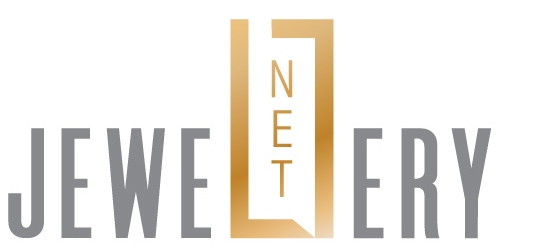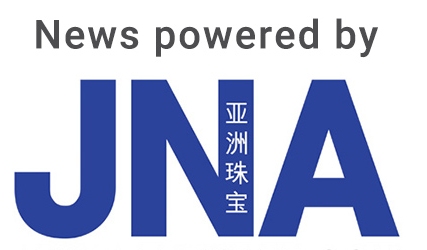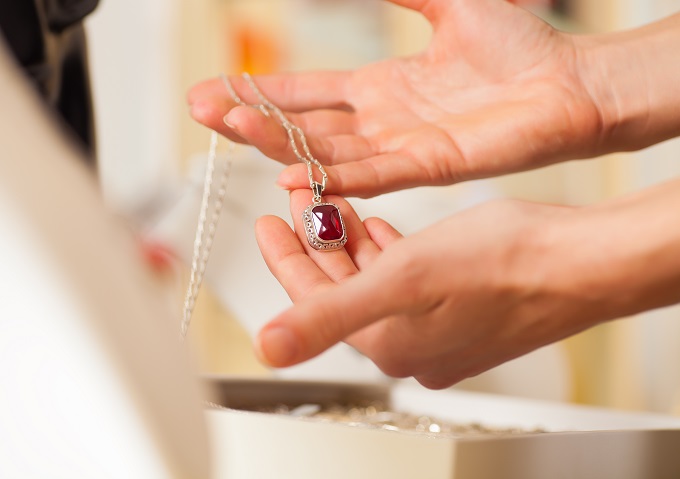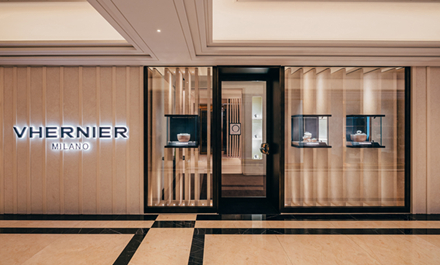US President Donald Trump has paused higher tariffs for 90 days for most countries and lowered reciprocal duties during the period, except for China.
In a post on social media platform Truth Social on April 9, Trump said he had authorised a 90-day pause in which countries would face “substantially lowered” counter tariffs of 10 per cent.
The president made the announcement hours after an “individualised reciprocal higher tariff” on several US trading partners took effect Wednesday.
The US announced a 10 per cent base levy on all imports on April 2, which remains in force. Meanwhile, Trump further raised tariffs on Chinese goods after China retaliated with 84 per cent tariffs on US imports.
“Based on the lack of respect that China has shown to the world’s markets, I am hereby raising the tariff charged to China by the US to 125 per cent,” Trump said in his post.
JNA spoke to jewellery industry players who shed light on the potential impact of increased tariffs on the trade.
Consumer confidence and higher costs
US manufacturers who source items from affected countries such as China for raw materials and finished goods or Canada and Europe for diamonds, for instance, could face tailwinds arising from tariffs imposed by the US government.
Jewelers of America, the national trade association representing US-based jewellery businesses across the supply chain, expressed concerns about the impact of sweeping tariffs on trade relationships and the US jewellery industry in general.
Tariffs could force retailers to raise prices on consumer goods imported into the US, including jewellery, stated David Bonaparte, president and CEO of Jewelers of America.
Data from the Observatory of Economic Complexity, which tracks data from multiple sources, showed that the US imported US$13.5 billion in jewellery in 2023 and US$75 billion in precious stones, metals and pearls, primarily from India.
Bonaparte said while the association supports government efforts to “hold trading partners accountable” and boost US-based manufacturing, the tariff approach is bringing about instability.
“Should tariffs hit the country's critical jewellery imports, these could also harm relationships with key industry partners like India,” he remarked.
The Jewelers of America official warned that an “unchecked trade war” could result in higher costs for consumers, adding that while tariffs are shouldered by US importers, these are ultimately passed on to consumers through higher prices.
With mounting costs, Americans are likely to cut back on discretionary spending such as jewellery, continued Bonaparte.
Missed opportunity
Meanwhile, manufacturers in the Association of Southeast Asian Nations (ASEAN) region had initially anticipated gains from the US-China trade war through production shifts and sourcing realignment, said ASEAN Gems and Jewellery Trade Association Chairman Suttipong Damrongsakul. US reciprocal tariffs announced on April 2 had, however, put paid to that strategy.
Now reduced to the standard 10 per cent, US tariffs on Southeast Asian countries were originally among the highest, due to purported trade imbalances.
Cambodia was hit with a 49 per cent duty; Laos, 48 per cent; Vietnam, 46 per cent; Myanmar, 44 per cent; Thailand, 36 per cent; Indonesia, 32 per cent; Malaysia, 24 per cent; Brunei, 24 per cent; and the Philippines, 17 per cent.
Damrongsakul said, “For Southeast Asia, particularly countries like Thailand and Vietnam, this development forces a recalibration where earlier optimism is now met with caution. Businesses that had positioned themselves as alternative hubs must now navigate a less predictable environment with shrinking export margins and rising geopolitical complexity.”
The government of Thailand had promptly sought to negotiate more favourable trade terms with the US following the April 2 announcement.
US tariffs would have a significant impact on the country's jewellery industry as the US is one of its most important export markets, said Vibul Hongsrichinda, chairman of the Gems and Jewelry Industry Club of The Federation of Thai Industries.
“We are already receiving reports of order postponements and shipments being put on hold. If the situation is not resolved quickly, it could lead to further delays or even cancellations, putting many businesses at risk,” Hongsrichinda said. “We are also concerned about intensified competition in other global markets - for instance, from China, which currently faces the highest tariffs from the US.”
Sidthisak Limvatanayingyong, president of the Thai Silver Exporters Association, agreed, saying that tariffs would result in increased costs for US importers, reduced competitiveness of Thai silver jewellery in the US and stiffer competition for international clients, among others.
The US is the top export market for Thai silver jewellery, one of the country’s key gem and jewellery products.
Limvatanayingyong noted that the additional costs, which will ultimately be borne by US importers and consumers, pose a particular challenge for small and mid-sized American jewellery brands and retailers.
“This segment is one of the fastest-growing sectors in the US market. Unfortunately, it is also the least flexible when it comes to finding alternative sources or setting up production facilities domestically. This represents a missed opportunity for both US and Thai businesses,” he explained.
Price-sensitive segments will also shift to suppliers with lower prices. In addition, tariffs of this scale can contribute to broader economic uncertainty and weak consumer sentiment. This will adversely affect global demand for silver jewellery, which is popular among middle-income consumers who are more vulnerable during economic stress, Limvatanayingyong continued.
The Thai silver jewellery sector aims to navigate the challenging business conditions ahead by serving its other major markets, diversifying its customer base and collaborating with the Thai government and strategic partners.
Limvatanayingyong cited Europe as a steady market for Thai silver jewellery, with India and ASEAN showing immense potential as well.
Thailand is also one of the largest trading and processing hubs for coloured gemstones, a sector that would also be significantly affected by global trade tensions.
“Any decline in global jewellery production, regardless of where the final product is made, will likely reduce demand for gemstones and affect the entire value chain, from traders to cutters and exporters,” said Hongsrichinda.
Hardest-hit sectors
Bronia Yip, chairman of the Hong Kong Jewelry Manufacturers’ Association, said US tariffs on Chinese goods dealt a significant blow to the Hong Kong jewellery industry, heavily impacting mass production companies and small-and-medium-sized enterprises (SMEs).
“Even with the original 26 per cent tariffs, these companies were already operating on low profit margins. Heftier tariffs will make it even more difficult to conduct business,” said Yip. “Some companies have temporarily halted shipments to the US while waiting for further developments.”
In addition, jewellers may now have to negotiate how to handle extra duties with their clients.
Tariffs imposed during Trump’s first term in 2018 prompted some Hong Kong jewellery manufacturers to relocate production to countries like Thailand or Vietnam, where tariffs were lower. Now these countries could also face significant levies.
Yip said while some markets like Singapore and the Middle East offer lower tariffs, SMEs may find it challenging to shift their businesses there due to complex requirements including local production and operational regulations, recruitment and training of workers and additional costs.
“Some members have already reduced exports to the US,” said Yip. “Moving forward, a more proactive approach would be to tap into new markets like those along the Belt and Road Initiative, Eastern Europe and Southeast Asia,” she noted.
Yip’s jewellery company, Goldiaq, derives a significant portion of its business from Europe, Asia, the Middle East and Eastern Europe, with 20 per cent coming from the US.
The Hong Kong jewellery trade is taking a cautious stance as it navigates uncertainties surrounding the tariffs, she stated, adding that future growth will likely depend on diversifying outside the US market.
Simon Chan, CEO of China Gems & Jade Exchange, meanwhile, said the US tariffs could have little effect on China's jewellery exports.
Citing government data, he said China shipped RMB600 million (US$81.63 million) worth of gemstone and jewellery exports to the US in 2024, majority of which is silver jewellery. China’s gemstone and jewellery exports to all trading partners, meanwhile, reached US$35.83 billion.
“With the latest imposition of 125 per cent tariffs on China, the US is delinking its trade with China. However, the impact on China's jewellery industry remains limited because we rely mainly on domestic production, distribution and consumption,” said Chan. “The reciprocal tariff policy will affect the world’s major jewellery exporters such as India and Thailand.”
The reciprocal tariff policy has broader implications, he added.
“The US is one of the biggest jewellery consumers in the world. The tariff policy will ultimately burden US consumers with higher jewellery prices, potentially leading to a precipitous decline in jewellery consumption within the US. This shift could position China as a more critical international jewellery market,” continued Chan.
Extended services
In response to logistical challenges related to Trump’s tariffs affecting global shipments of gemstones, the Gemological Institute of America (GIA) said it is temporarily expanding services offered by the GIA Laboratory DMCC and the GIA Hong Kong laboratory.
Specifically, rough or polished D-to-Z diamonds of up to 9.99 carats may be submitted to GIA Dubai and Hong Kong, while rough or polished D-to-Z diamonds of 10 carats and above and fancy colour diamonds may be submitted to GIA Hong Kong until further notice.
D-to-Z diamonds, rough or polished, of up to 3.99 carats may continue to be submitted to GIA Bangkok, Dubai, Gaborone, Hong Kong, Johannesburg, Mumbai, Surat and Tokyo.
“Rough diamond submissions are subject to the Kimberley Process Certification rules in each country; rough diamonds cannot be shipped to the GIA laboratory in Dubai,” the institute said.
The GIA laboratories in the US (Carlsbad and New York) will continue to accept diamonds, coloured gemstones and pearls of any size from US clients or with a US country of origin. Meanwhile, GIA Bangkok, Hong Kong and Tokyo will continue to provide services for coloured gemstones and pearls, and GIA Mumbai will continue to provide pearl services.










